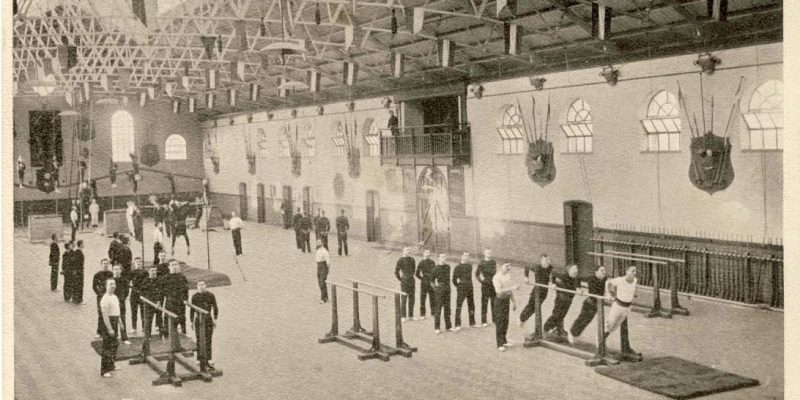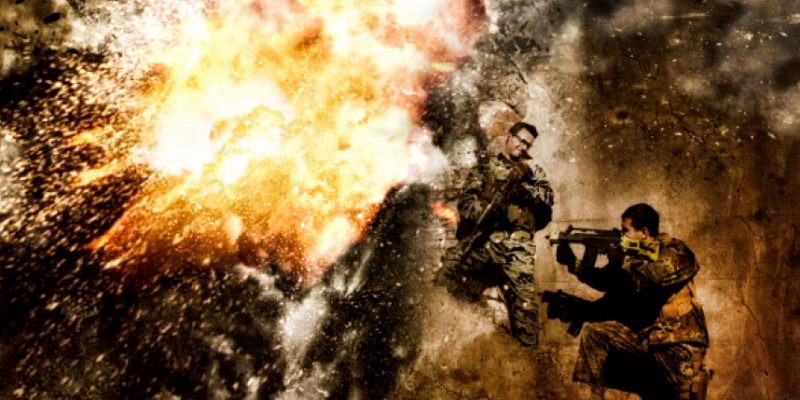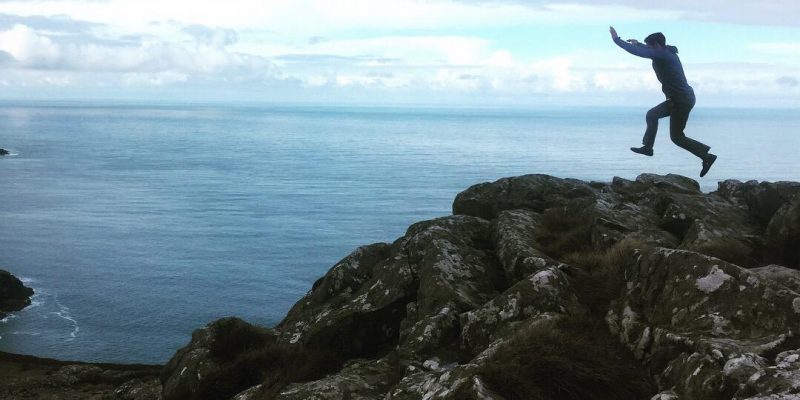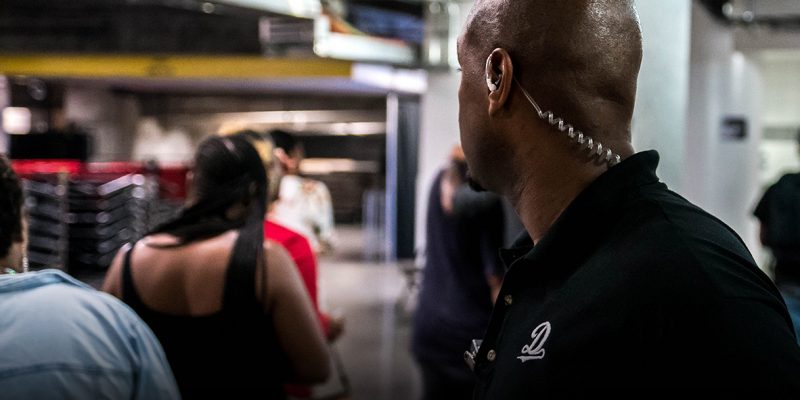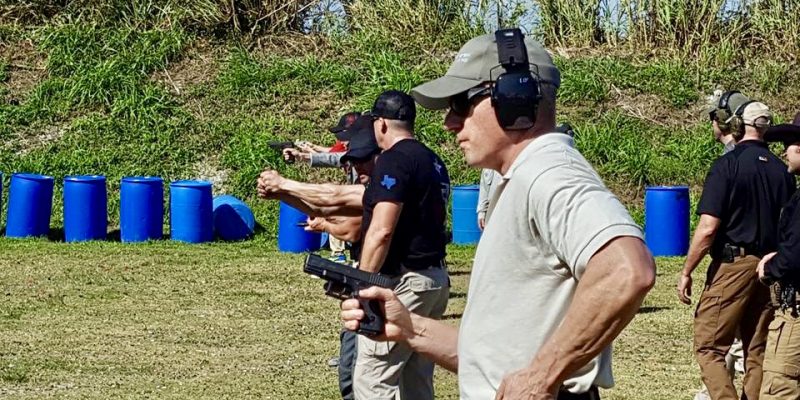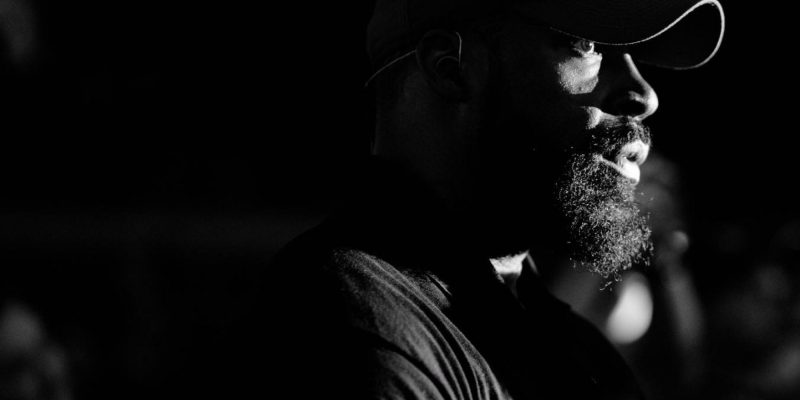Handguns are meant for close-quarter shooting. Think about it; if someone is going to attack, kidnap or rob you on the street, they are going to be close, within conversational range. Now, look around your home or business and see what the maximum distance is that you would have a clear shot at a criminal or terrorist, for most this will be less than 10 yards/meters. This places emphasis on close quarter instinctive shooting over precision target shooting. As part of your training practice for long distance shoots (for handguns, this means over 25 yards), you should try hitting targets out to and over 100 yards. This will improve your handgun skills and show you your capabilities and limitations, but the emphasis should be on close quarter instinctive shooting.
Image Projection – It’s a Psychological Advantage
The term ‘Image Projection’ refers to the tactic of presenting yourself as an Alpha personality in order to discourage a confrontation.
In short, dressing like an Alpha personality prompts respect from people (men and women) and makes you look like a hard target (psychologically).
Counter-Ambush Tactics for Security Professionals – Part 2
The first two of these tenets involve soft skills which are sometimes referred to as Protective Intelligence (PI) and include situational and tactical awareness skills (route analysis and surveillance detection). The third tenet, Defend, requires hard skills such as the use of firearms and security driving. These hard skills may be required if we were unable to prevent or avoid an attack, and we end up in a situation where we have to survive an ambush. Continuing where we left off in Part One, we will finish covering some of the soft skills involved in Protective Intelligence and then move on to discuss the hard skills.
Executive Protection Travel Pack
As is common with us all, we love our gear and we can’t get enough. A common discussion in our Facebook group, The Protective Security Group, is travel gear and equipment.
While not meant to be a comprehensive or ‘cookie-cutter’ list, below I share a typical packing of my ‘go-bag’ which I hope you all find useful; at least as a good baseline to add/subtract from for your travel needs.
The Practical Application of Military Physical Training
If you take the four areas that are part of the traditional military model: gymnastics/calisthenics (bodyweight exercise), outdoor obstacle courses (moving efficiently through a range of environments), combat sports (boxing, grappling etc), speed marching (bipedal locomotion); these intrinsically include the main focus physical qualities: mobility, strength, reaction speed, coordination, balance and cardiorespiratory function. If these areas are incorporated into a physical fitness programme, treated as a skill and kept in the majority at a low/medium intensity with bouts of high intensity, the result will be a well-rounded human capable of thriving in the diversities of the modern life.
Industry News
We cast our eye over the main stories impacting the security industry. Here’s what’s appeared on the radar since the last issue.
Protecting the Principal in a Pandemic
From an operational perspective, CPs need to go back to fundamentals and apply the golden rules of protection planning and risk assessments to medical scenarios. For instance, from a strategy perspective, many HNW bought ventilators only to later discover that they would never be delivered due to shortage. So, it’s important to think how do we improve our planning and strategy from the outset to account for the unexpected? Scenarios and risks should be assessed as always in a well thought out threat matrix.
The Fallacy of the Individual Bodyguard
It was the height of British military and government involvement in the ill-fated NATO-led effort to crush the Taliban, and Kabul was inundated with people needing close protection services. From diplomats attempting to build infrastructure and civil institutions to corporate honchos sniffing out potential business opportunities, there was no shortage of clients for security firms to pitch. As my conversation with the in-country manager progressed, I broached the subject of IBGs – individual bodyguards. I told him in no uncertain terms that the idea of having an individual effectively carry out the functions of a close protection team was utter and absolute flannel. His response: “Maybe, Bob. But it brings in the dollars!”
Defining Professionalism in the Personal Protection Industry
Not because there is less work out there, in fact, the opposite is probably true. With global threat levels at an all-time high, there is more work in the security industry now than there ever has been and the security industry is booming, but it’s harder to find work because there are now thousands more so-called ‘qualified’ CPOs chasing after every position. It is a fact that most licensed operators have never actually done a day’s close protection work in their lives. At the time of writing this article, there are over 14,000 valid, UK, CP licences. Yes, over fourteen thousand people in the UK currently have a license to operate as a Close Protection Officer.
Tactical Vs Tacticool
The ‘tactical culture’ had flourished over the last few years, mainly due to the proliferation of video cameras and increasing engagement with social media platforms, which I believe is causing the lines between reality and the ‘tacticool’ entertainment world to become very, very blurred…
It takes very little these days to be a part of the tactical sub-culture that is trending, here’s how to do it. Simply, purchase a gun, where legal, get your hands on some tactical clothing, buy a bunch of ‘black op’ accessories, plug into ‘Soldier of Fortune’ social-media channels and perhaps even take some no-fail tactical training courses, then after a few months, hey presto, you’re an expert! Whereas, in the good old days, the only option, if you wanted this lifestyle, was to join the military – preferably the Infantry!
Deciding How To Start Your Career In Close Protection
Who, when initially looking for a close protection course, tried to find the cheapest course and quickest route possible to your badge? Who researched their training provider and checked out all the credentials and qualifications of their instructors?
Who doesn’t intend to do any other training until they find at least some work to pay back their initial training costs? Who, reading this, has attended an ‘accredited’ training course but has actually never yet done a day’s work as a designated protection officer? I could go on, but well… you get the picture!
Fit for Purpose – Mindset, Ideas, and Planning Adventure series P1
With the majority of people now living and working in built up, artificial environments, it is now even more prevalent to proactively seek out opportunities to maximise time in natural surroundings and include adventurous activity frequently. As security professionals we can be away for long periods and do less than favourable hours; having an outlet that allows us to disconnect and recharge our batteries is absolutely essential. Analyse your own unique situation, look to log a typical week and note down the hours you are inside at work and separately in your own time, log the time you spend exercising (at whatever intensity, a walk to the shops is included) and finally the time spent doing adventurous activities outside of a gym environment. The results will highlight where you can make positive changes or confirm a good indoor/outdoor balance.
The Mentality of the Modern Protector
Over 30 years ago, when I left a failing white-Collar industry in a failing economy in Texas, I did what many in my predicament did. I entered the contract security industry at near minimum wage. What I did that many others did not, was survive in the industry long enough to out earn annually what I was earning in my previous profession.
THE NEW Open Source Intelligence
We all hear about this OSINT malarkey but searching the Internet for information is much much more than just dropping a couple of search terms into Google.
There are many different search engines out there and using these various systems, combined with how you actually search for phrases, should bring you the results you are after.
Head on a Swivel
Catchphrases are good to identify an action; they’re not good in obtaining the Skill of that action. The foundation of the proverbial “head on a swivel” is Situational Awareness.
And just like Head on a swivel, “situational awareness” is a widely used phrase but not a widely understood Skill. It takes time for one to master and understand two phrases, and two actions
Women In The Close Protection Industry
First, I prefer placing female CPO’s with female clients or their children for the client’s comfort or peace of mind. Some males are easily suited to this task but the client may simply think that a male does not belong in constant close proximity and occasionally in isolated private settings with the kids or a client’s wife. This can be equally true with female CPO’s and male clients but the concern of inappropriate behavior with the children dissolves when a female is placed with them. Remember, it’s always up to the client.
Gap Training – What Most Practitioners Overlook
Many industry practitioners understand and embrace that continuing education is a necessity in a highly competitive, rapidly evolving industry such as protective services. Yet, there is a commonly overlooked issue which leaves gaps for most. When selecting training, do you find trendy topics, or do you train to fill your gaps?
Yet, there is a commonly overlooked issue which leaves gaps for most. When selecting training, do you find trendy topics, or do you train to fill your gaps?
Should protection officers be trained in unarmed combat?
Protection officers worldwide who have extensive unarmed combat training will unreservedly answer this question with; “Of course!! How can a protection officer not have any self-defense or unarmed combat training! How can a protection officer not know how to physically protect?”
Industry News November 2019
Industry News November 2019, At A Glance. We cast our eye over the main stories impacting the security industry. Here’s what’s appeared on the radar since the last issue.
Keeping Your Edge – I Finished Training, Now What?
It’s the final wrap up of the last day of your Close Protection training course. It’s been a long, and at times grueling, process but ultimately rewarding on multiple levels.
Along the way you’ve met some people you have really gelled with (and a couple that you have no plans on staying in contact with once class ends.) Overall, you enjoyed the experience, feel like you have gotten your moneys worth, and can say that you have some new, “tools for the toolbox.”




